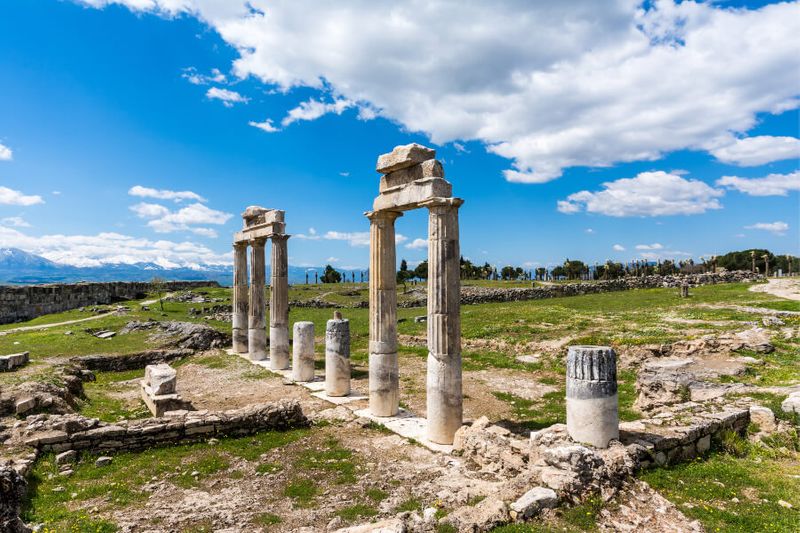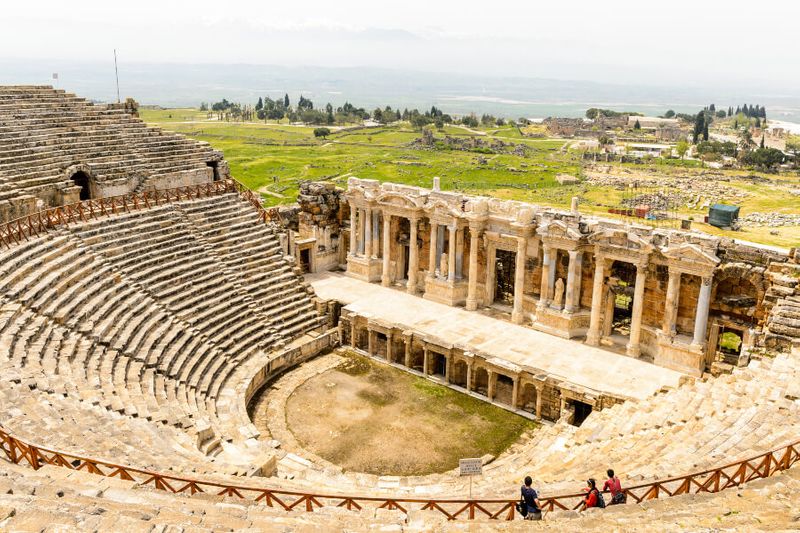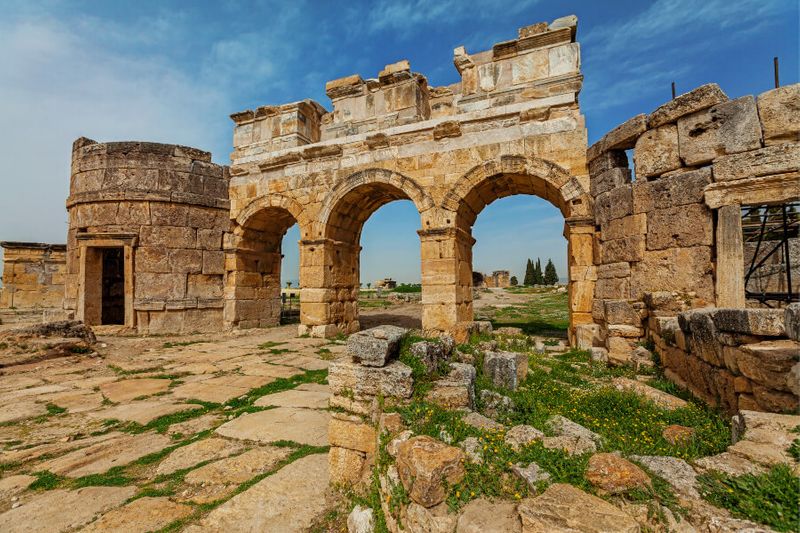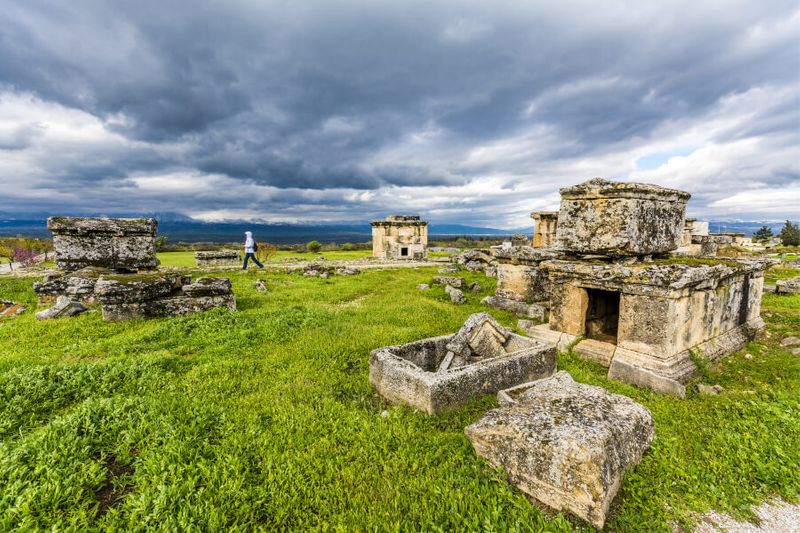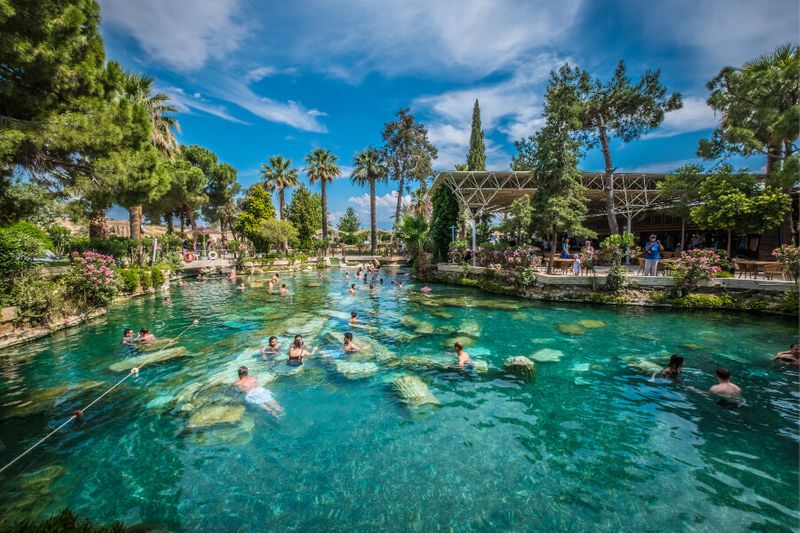Where history, myth and nature collide
UNESCO-listed Hierapolis is located in south-eastern Turkey, next to the famous calcified waterfall Pamukkale. Hierapolis means ‘Holy City’ in ancient Greek, and indeed it was the focal point for the worship of Pluto, God of the underworld. Since ancient times the Greco-Roman city has been revered for its hot springs; whose steam and gases inspired prophetic visions in Pluto’s priests. It has even been speculated that the Door to Hell can be found in Hierapolis’ gas-filled fissures.
Hierapolis was founded in the 7th century BC and it soon became a thermal spa and healing centre. In the 2nd century AD, it was ceded to Rome and was toppled by a disastrous earthquake; one in a series of many to come. Reconstruction of the town in the Roman style cemented Hierapolis’ importance in the Roman Empire; it was renowned for arts, philosophy and healing. The large and prosperous population was supplemented by many illustrious visitors, including the Stoic philosopher Epictetus, and the biblical figure Philip.
Start your exploration at the Archaeology Museum, which is housed in the one-time Roman Bath. Here you will find archaeological treasures from surrounding towns and Hierapolis itself which include devotional items and depictions of the Greek gods. Your next stop should be the theatre. Look down into the beautifully preserved stage, which can be observed from the lower levels of seating. The three-story backdrop, or scaenae frons, is immense and decorated with reliefs portraying mythological figures. The surrounding seating had a capacity of up to fifteen thousand spectators who gathered to watch battling gladiators, aquatic shows and plays.
The Temple of Apollo is perhaps the most fascinating relic on the site. It was built over an active fault called the Plutonion, issuing a toxic carbon dioxide gas which would asphyxiate anyone nearby. Only priests could safely descend into the shrine and relay petitioners’ questions to the Oracle. Later, Christians built a huge drinking water fountain called the Nymphaeum in front of the Temple to block off the pagan site from view.
A brief walk through the stone-paved streets will reveal a typical grid-based Roman city. The main street is capped with two monumental gates. To the north, the Byzantine Gate bolstered the 4th-century fortifications with two quadrangular towers and apotropaic elements to ward off evil. The arched travertine Frontinus Gate in the south acted as the entrance to the heart of the city. Residents would pass through the gate into the colonnaded Frontinus Street and head towards the ancient Agora, one of the largest uncovered marketplaces discovered so far.
If you’re feeling energised, pass beyond the city walls through the southern gate towards the Necropolis. This ancient cemetery is one of the best-preserved in all of Turkey, with twelve hundred tombs dating back as far as the Hellenic period. Here, residents and patients from the thermal spa were buried according to their socio-economic status and cultural traditions.
Don’t forget to take a soak at the Sacred Pool, a thermal hot spring filled with fallen marble columns. It’s not only a chance to get up and close with the antiquities, but you may even find relief in the hallowed waters like the visitors of old.
